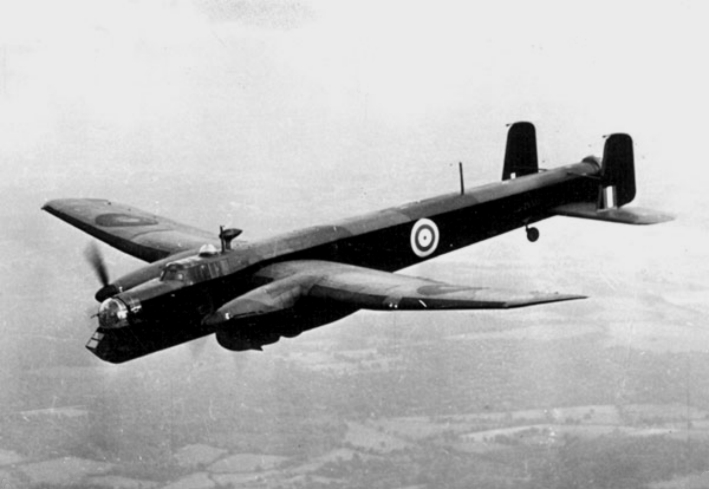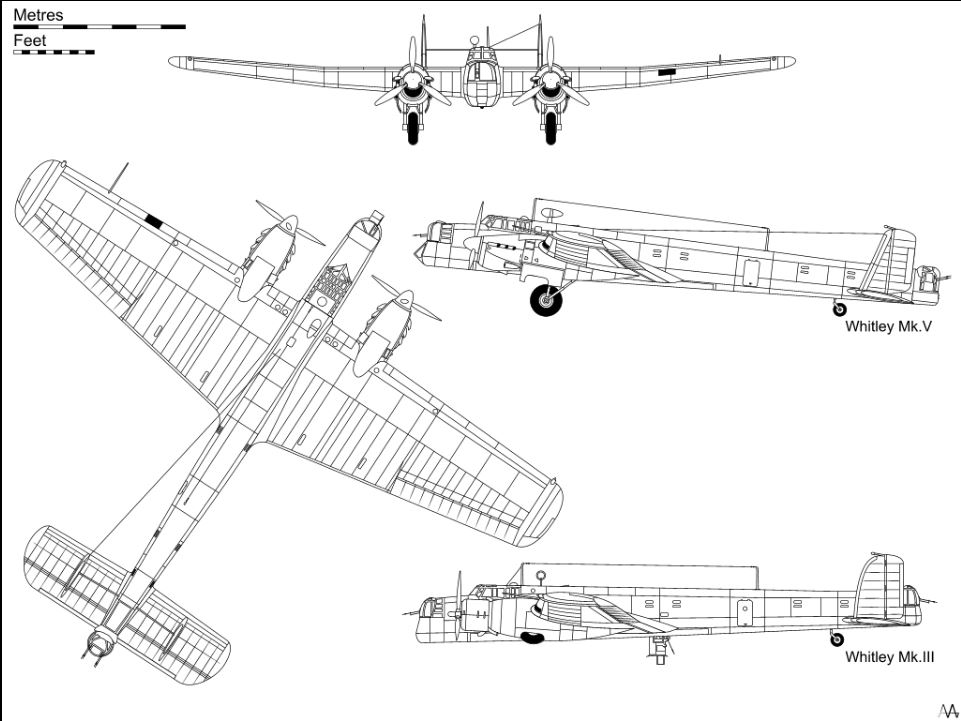Armstrong Whitworth A.W.38 Whitley
From Our Contribution
Remarks
Designed in 1934 I response to an Air Ministry request for a heavy night bomber / troop transport to replace the Handley Page biplane bomber. Its two engines made use of a three blade, two position variable pitch propeller. Early design versions did not have flaps. An initial order for 80 aircraft was received before any prototype was flown in June 1935 and they were produced at three Coventry factories. The first prototype plane's maiden flight occurred on 17 Mar 1936. Several engine types were fitted to planes before the Rolls Royce merlin engine was used in 1938, significantly improving performance.
Whitley bombers entered squadron service in March 1937 with No. 10 Squadron RAF, 58 Squadron in January 1938 and 51 Squadron in August 1938The most popular variant was the Whitney Mk VII, with 1,466 built. By the outbreak of the war, 196 Whitley aircraft in seven squadrons were operational mainly with Mk III or IV variations. These aircraft were the first to fly over Germany, dropping propaganda leaflets, and they raided Italian territory only hours after Italy joined the Axis forces. Effectively obsolete by the time the war began, another 1,00 aircraft were produced until a suitable replacement was found.
The final variant, the Whitley Mk VII was designed for maritime surveillance by RAF Coastal Command. With increased fuel capacity and a sixth crew member to monitor the radar system. They operational range was 3,700 km, or 1,400 km greater than other variations. 146 were manufactured, and some were later transformed into training aircraft. In all, 269 Whitleys were lost in action during WW2.
General characteristics
- Crew: five - pilot, co-pilot/navigator, bomb aimer, wireless operator, rear gunner
- Length: 21.49 m
- Wingspan: 25.60 m
- Height: 4.57 m
- Empty weight: 8,754 kg
- Max takeoff weight: 15,195 kg
- Powerplant: 2 x Rolls Royce Merlin liquid cooled V12 engines
- Maximum speed: 370 km/h at 5,000 m
- Range: 2,660 km
- Service ceiling: 7,900 m
- Armament
- Guns: 1 x .303 in Vickers K machine gun in nose turret & 4 x .303 Browning machine guns in tail turret.
- Bombs: up to 3,175 kg in fuselage and 14 in below wings (12 x 113kg and 2 x 227kg)
Crew members
No. 51 Squadron RAF
- † Claude Dominic Hemy KIA 3 Aug 1942 Bay of Biscay in a Mk VII

